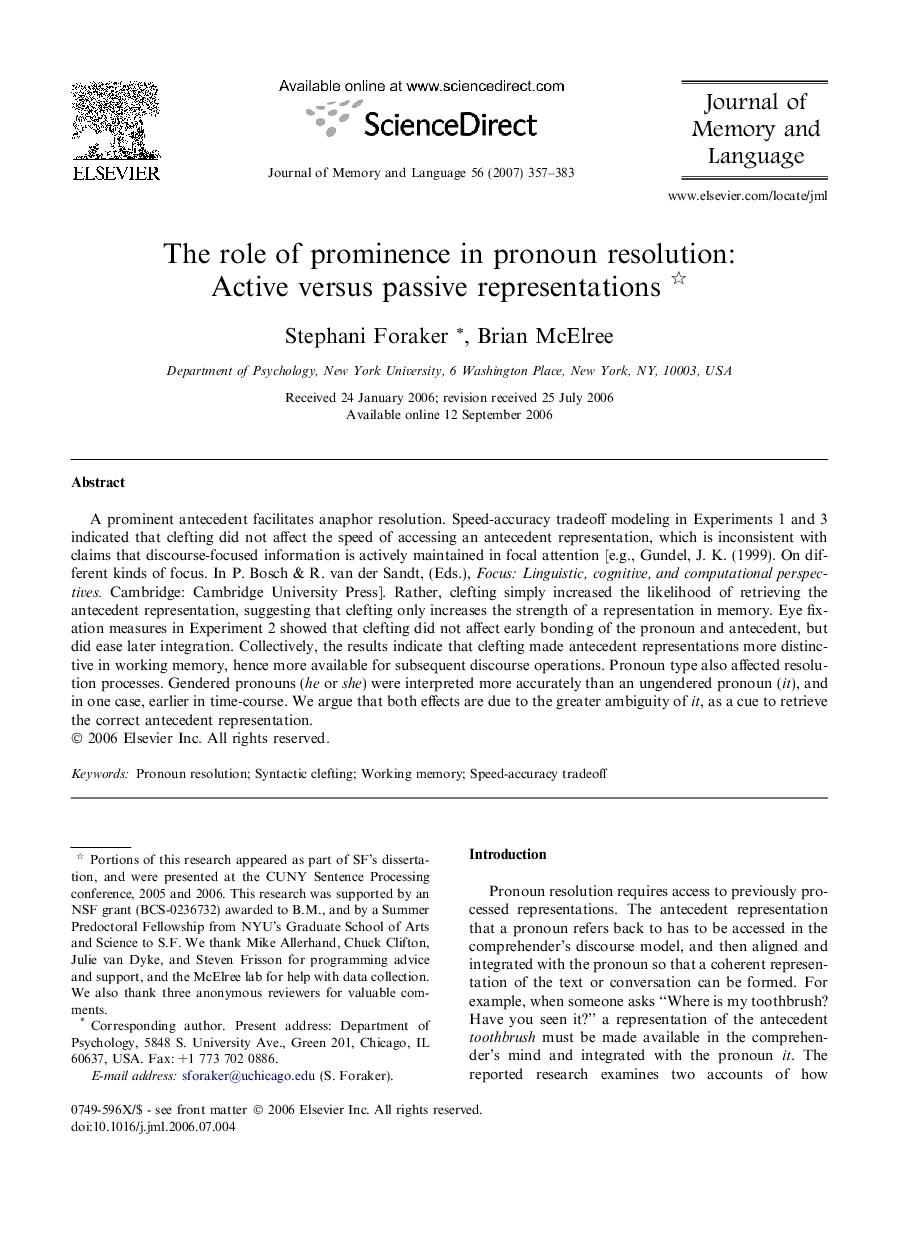| Article ID | Journal | Published Year | Pages | File Type |
|---|---|---|---|---|
| 932252 | Journal of Memory and Language | 2007 | 27 Pages |
A prominent antecedent facilitates anaphor resolution. Speed-accuracy tradeoff modeling in Experiments 1 and 3 indicated that clefting did not affect the speed of accessing an antecedent representation, which is inconsistent with claims that discourse-focused information is actively maintained in focal attention [e.g., Gundel, J. K. (1999). On different kinds of focus. In P. Bosch & R. van der Sandt, (Eds.), Focus: Linguistic, cognitive, and computational perspectives. Cambridge: Cambridge University Press]. Rather, clefting simply increased the likelihood of retrieving the antecedent representation, suggesting that clefting only increases the strength of a representation in memory. Eye fixation measures in Experiment 2 showed that clefting did not affect early bonding of the pronoun and antecedent, but did ease later integration. Collectively, the results indicate that clefting made antecedent representations more distinctive in working memory, hence more available for subsequent discourse operations. Pronoun type also affected resolution processes. Gendered pronouns (he or she) were interpreted more accurately than an ungendered pronoun (it), and in one case, earlier in time-course. We argue that both effects are due to the greater ambiguity of it, as a cue to retrieve the correct antecedent representation.
